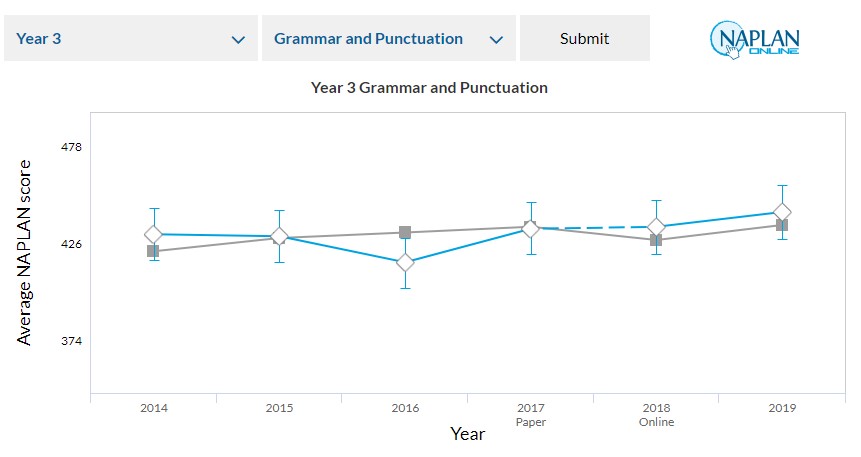One of the trickiest things you may do as part of your Aussie emigration journey, is choose a school before you emigrate to Australia.
There are so many things you need to get your head around when you emigrate, from healthcare to taxes, public transport to buying a house. And if you have kids, then the education system is just another thing to add to your list of new things to learn.
As a parent, you might be a bit panicky about the schooling system in Australia. Personally I feel that as South Africans we can often place a high value on education and want only the best when it comes to schooling for our children.
There are plenty of great public schools here though, so it’s not always necessary to assume your child will attend a private school once you’ve made the move, as many South Africans do.
I’ve put together a comprehensive guide on how to choose a school before you emigrate to Australia – hopefully you find it useful and it starts you off on how to pick the right school for your child once you’ve made the move.
In this post I’ll cover:
- How the Australian school system works
- Types of schools in Australia
- Catchment areas for public schools
- Specialist subject schools
- Performance ratings for Australian schools
- Practicalities to consider when choosing a school
- Fees for schooling in Australia
How Does The Australian School System Work?
School education is similar across all of Australia with only minor differences in some states and territories. School is compulsory between the ages of six and sixteen (Year 1 to Year 9 or 10). School education is 13 years and divided into:
- Primary school – Runs for seven or eight years, starting at Kindergarten/Pre-primary to Year 6.
- Secondary school – Runs for three or four years, from Years 7 to 10 or 8 to10.
- Senior secondary school – Runs for two years, Years 11 and 12.
In Western Australia, children can start their education in Kindergarten, however compulsory schooling starts the following year in Pre-primary.
All children of compulsory school age must be enrolled in school and attend every day – this is the law.
All children must attend school up until they are 16 years old. Sixteen and 17 year olds must be enrolled in school or a training organisation, be employed or be in a combination of school/training/employment.
To check the rules around school education requirements in the state or territory you are living in or will be moving to, visit the individual state education department websites for more information.
Western Australia – https://www.education.wa.edu.au/
New South Wales – https://education.nsw.gov.au/
Victoria – https://www.education.vic.gov.au/Pages/default.aspx
South Australia – https://www.education.sa.gov.au/
Queensland – https://education.qld.gov.au/
Tasmania – https://www.education.tas.gov.au/
ACT – https://www.education.act.gov.au/
Northern Territory – https://education.nt.gov.au/
Types Of Schools In Australia
There are 2 kinds of schools in Australia – public (government) schools and private schools.
Public schools are funded by the government, usually with a small annual fee payable by each student.
Private schools are fee paying schools where parents of students pay hundreds or thousands of dollars per year per student.
Private schools are mostly associated with a religion and therefore teach elements of their religion to their students. Some schools give preference to enrolling children who come from actively religious families from their own faith, but usually have some places available to students from other faiths, or who observe no religion.
Home schooling is also an option for many families in Australia.
Catchment Areas For Public Schools

Public schools in Australia each have a catchment area.
This is a surrounding boundary area around the school and if you live within this set boundary, your child is eligible to attend the school.
It is very difficult to get a child accepted into a public school if you do not live within the catchment area.
You will be required to provide proof of your address when you enrol in a public school, to ensure you are within their catchment. This is why it can be hard to get a response from a school when you enquire about enrolling but are not yet living in the country.
Private schools on the other hand will allow any enrolments that meet their specific standards, and are not limited by any catchment restrictions.
There are some academic schools that are public and do not operate with a catchment area, but rather have an entrance exam requirement. An example is Perth Modern School, which is WA’s only fully academically selective co-educational high school. These schools are not the norm but they do exist.
Specialist Subjects & Curriculums
For primary schools this isn’t so much of an issue but when it comes to high school, there are many different specialist subjects your child can choose.
These subjects and specialities vary from school to school so investigating what subjects are on offer at your short-listed skills could help you and your child make the right decision for them.
For example, in Perth, there are 3 public schools that are specialist cricket schools and they partner with the Western Australian Cricket Association and the Education Department to provide a specialist cricket program from Year 7 – 12.
Other schools might offer a specialist music, agriculture, technology, golf, rugby, fashion, or marine studies program. There are over 100 approved specialist programs in Western Australia alone – you can see the full list here to see if there are any particular programs that would be ideal for your child.
For specialist programs like these, you can apply to attend the school even if you are not in the school’s catchment area. However, all schools guarantee places for children in their local intake areas as the first priority. After taking local enrolments, a school may then take enrolments from children selected for Approved Specialist Programs who live outside the local area if the school has capacity.
School Performance Ratings & NAPLAN Testing

One factor you can use to assess schools before you move to Australia are how well they perform academically.
NAPLAN (the National Assessment Program – Literacy and Numeracy) is the only national assessment that all Australian children undertake. It provides comparable data about student performance in literacy and numeracy nationally and over time. NAPLAN tests students in reading, writing, language conventions (spelling, grammar and punctuation) and numeracy.
All students in Years 3, 5, 7 and 9 write NAPLAN tests each year.
While it can be useful to gauge the academic performance of a school, NAPLAN is quite a controversial testing methodology and should not be used as the only factor when choosing a school before you emigrate to Australia.
It has been known that some schools will ‘sit out’ children that they believe may lower the school’s results – so don’t take the results as the whole truth – rather as a guide. Also remember that these are standards set by the government and do not take into account the individual abilities of each child. Not all children fit into the government’s neat little tick boxes – and that is completely OK!
You can however look up all schools and their NAPLAN results on the My School website to get a feel for their academic performance.
Book A School Tour
The best way to get a feel for a school is to book a tour once you have arrived.
It’s honestly impossible to know if a school will be a good fit for your child until you have visited the school. This allows you to meet the teachers and staff, see how the school is run, and how the children who attend it behave. Are they well-mannered, polite, friendly, neatly-dressed, or whatever qualities you are hoping for?
Most schools allow visits but they do need to be pre-arranged. Don’t just turn up and expect a guided tour at your own convenience.
Work Out The Practicalities
If you know where you may be working, and roughly what sort of salary you might earn, it will help you narrow down some areas that are within your budget to live in.
From here you can think about what schools there are in your area and whether you want to opt for a public school or a private school.
If you would like your children to attend a good public school, it pays to research which public schools have the best reputations so you can work out what their catchment area is, before you sign a rental agreement.
If you are undecided about whether to opt for a public or private school, you can investigate the local schooling options and see if you feel which local school might be suitable for your children.
Once you know where you will be living and working, you can then take into account the potential distances from home to school to work. Knowing that it will be practical to get your kids to and from school each day and how you will do that is important.
Are there public transport options for the kids to get to school? Some schools offer a bus service, others are near bus or train routes and many high school students do take public transport to school. Alternatively, you may do the school drop off and pick up each day, so knowing the route, distance and time it will take can help you make a decision as well. Will it be a 5-minute walk or a 45-minute drive twice a day for 7 years? All those hours in a car can add up!
What School Fees Can You Afford?
Another sometimes sensitive subject, is what fees you can afford.
Public schools can have annual fees per student of a few hundred dollars, while the top rated private schools can costs tens of thousands.
You need to assess your earnings, lifestyle and budget and choose a school you can afford for your children.
This is a completely personal decision. Some parents may live in a cheaper area and eat beans on toast for 7 years in order to afford the fees at their preferred school. Others may be happy with their local public school and not see any point paying for a private education.
Some families may only have 1 child so private schooling is affordable – if you have 4 kids, it could be more of a stretch to afford 28 years’ worth of school fees and that’s before any of them even contemplate university!
If you are set on a private school education in Australia for your child, check out the fees as they can vary wildly from school to school. Catholic schools are often on the cheaper end of the spectrum, while other denominations can be anything from $5000 to $30,000+ per year per student. Scholarships can be available too based on academic exams, so find out if this might be an option for your child.
I hope you’ve found this guide on how to choose a school before you emigrate to Australia a useful starting point.
Remember there are other options too – home schooling is popular in Australia and this is a route many parents choose instead of mainstream education.
You need to do what is best for your child, but that can feel completely overwhelming from 5,000 miles away. Know that it WILL work out, and you will find the right option for your child. Education is emphasised and well-supported here in Australia and there are a multitude of options available to children of all cultures and backgrounds.
If you enjoyed this blog, read these ones too:
The Differences & Similarities Between The South African and Australian School Systems
And
How Will Your Children Cope With Migration?






No Comments